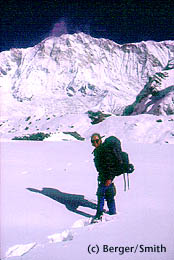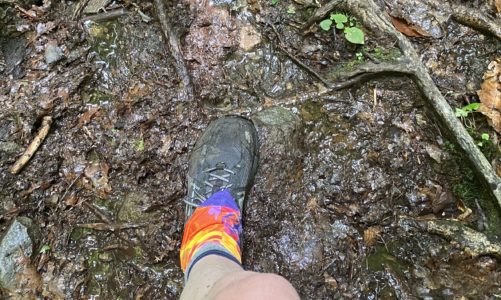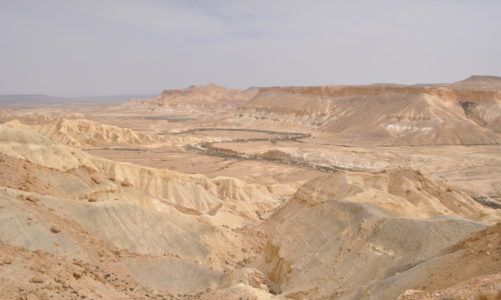What we are learning here, at this class for trekkers given by the Himalayan Rescue Association, may tell us otherwise.
The Himalayan Rescue Association was founded in 1973 as a collaboration among volunteer visiting doctors, Nepali health officials and doctors, and representatives from trekking companies. The founders recognized that Nepal’s trekking routes were drawing more and more tourists to the high altitudes of the Himalayas – but at a cost.
The most common trekking routes reach dangerous altitudes for inexperienced hikers: up to nearly 18,000 feet at Everest Base Camp and at the Thorong La on the Annapurna Circuit, and more than 16,000 feet on other popular routes. The first foreign visitors to these high mountains were skilled outsdoorspeople with experience at altitude. But as trekking became more and more popular among “lay people,” it became clear that many trekkers had no idea how to recognize and respond to the symptoms of altitude sickness. Some became seriously ill. Some died.
Mt Everest and Annapurna Himalayan Rescue Association Aid Stations
The first aid station was opened in 1973 at the hill town of Pheriche in the Khumbu region, on Nepal’s Mt. Everest Trek, at an altitude of about 14,000 feet. During the trekking seasons, it was manned by volunteers who lived in yak herders’ huts and tents.
A second station was opened in 1981, in Manang, a town on the Annapurna Trek, a two-day walk from Thorong La, the 17,800-foot pass that is the Annapurna Trek’s highest point. In 2008, another aid station was opened at Thorong Phedi — the foot of Thorong La, the pass that is most dangerous on the Annapurna Circuit. At these aid stations, doctors provide education, screening, and treatment; if necessary, they also aid in rescues of afflicted trekkers.
Educating Nepal’s Trekkers About Altitude Sickness
 |
| Nepal’s High altitudes can be dangerous. |
Where altitude sickness (also called acute mountain sickness) is concerned, prevention is always the best course of action. This is particularly true in Nepal, where rescue is difficult because there are no roads into the trekking areas. Air-rescue is expensive and often impossible because of weather conditions and terrain.
So the Himalayan Rescue Association program focuses on prevention. They publish a series of educational pamphlets, available in Kathmandu hotels and trekking agencies. And during the trekking season, doctors hold a daily lecture on altitude sickness at the hill-town aid stations. By screening trekkers as they come through the high hill towns, the Himalayan Rescue Association has been able to decrease the incidents of mountain sickness.
The lectures teach trekkers to recognize symptoms of altitude sickness, and stress the importance of gaining elevation slowly and taking rest days. This advice is particularly important on the Annapurna Trek, because the Thorong La reaches such high elevations, and on the Everest Trek, because today, many Everest trekkers fly to the airstrip at the high-altitude village of Lukla. They therefore forego some of the essential acclimatization that is one of the main ways to prevent altitude sickness.
Himalayan Rescue Association doctors also stress that Nepali porters and guides are also susceptible to altitude sickness. While many Sherpa people native to the Sol Khumbu region near Mt. Everest are well-acclimated to the high altitude, porters and guides from lower elevations near Pokhara or Kathmandu are often just as susceptible to altitude sickness as trekkers – but may be less likely to admit to it, since their jobs depend on their strength. Trekkers therefore, need to be alert not only to their symptoms, and those of their trekking partners, but to symptoms of porters and guides as well.
Volunteer Doctors and the Local Communities
In addition to providing preventative care for trekkers, guides, and porters, the Himalayan Rescue Association has done comprehensive research on the subject of altitude sickness. It also provides free and low-cost medical care to local villagers who live near the stations (sometimes, the staff even tries to treat sick animals brought in by villagers!). These are remote towns, far from any roads, and the health care provided by the volunteer doctors is the only western medical care available. Donations collected from trekkers are used to support the medical care given to local people.



